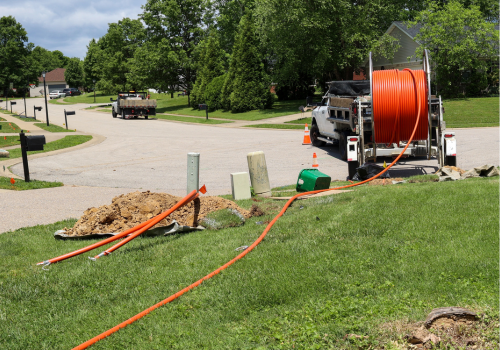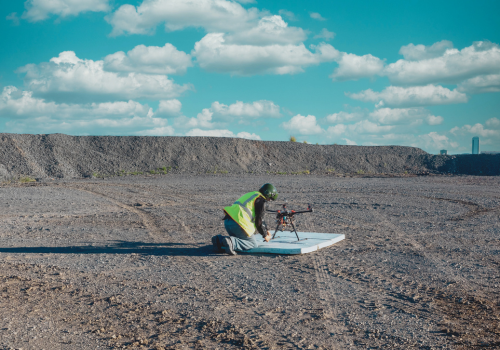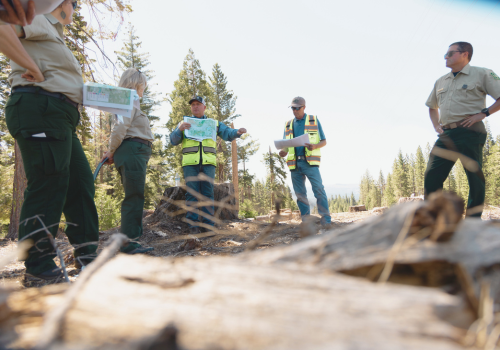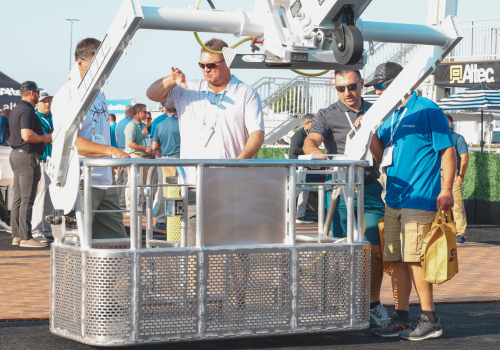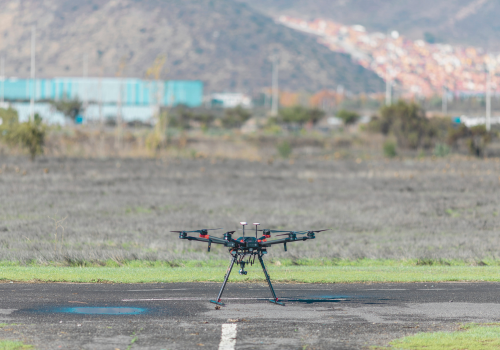Utilities buried underground pose the least disruption to the public; however, installing these utilities can be a very disruptive process.
Installing an underground utility traditionally and still, today involves excavating a trench as deep as the utility and wide enough to fit a trench box, which translates into removing several cubic yards of earth to install a utility that is often only a few inches in diameter. That entire area is potentially a safety risk to workers and possibly the public.
If the trench path is in an urban setting, it often means ripping up roads and sidewalks, which disrupts people’s movements. And then, all of that has to be replaced and repaired—the earth, the road, the sidewalk—anything that got ripped up.
It can be a destructive and costly process.
Drilling saves time, money, and the environment
Trenchless technologies, including the use of horizontal directional drills (HDDs), minimize disruption to the public and the environment in which the utility is being installed.
The benefits of HDD are especially pronounced in urban environments,” says Dr. Samuel T. Ariaratnam, Professor & Beavers-Ames Chair in Heavy Construction at Arizona State University. “You can cross roads and bodies of water and neighborhoods with minimal disruption to vegetation and the surrounding area.”
The HDD process typically includes three steps:
1. Drilling a small diameter pilot hole along an underground path from one surface point to another.
2. Enlarging the pilot hole with a back reamer to facilitate pipe installation
3. Pull the pipeline through the enlarged hole until it reaches the entry side.
“HDD is a very versatile technology,” says “Ariaratnam. “You can use it to install water, sewer, oil, electric, natural gas, cable, and telecommunications lines. You can also use it to cross a variety of obstacles, such as various bodies of water, important ecological areas such as wetlands, and the built environment, with minimal disruption to the surface area.
At The Utility Expo 2021, Ariaratnam taught a field educational class on advanced HDD, called “Advanced HDD: Challenges and Good Practices for a Successful Installation”. The field class involved Ariaratnam lecturing to students while walking throughout the outdoor exhibition to interact with products and technologies, as well as speak to various vendor experts at the booths.
“The students follow me around and then see the drill rigs and ancillary equipment, such as recycling and locating equipment, as well as the tooling that’s involved. They see rigs from different manufacturers, get a hands-on learning experience about how drilling is done from equipment and technology professionals,” says Ariaratnam.
Ariaratnam, who also taught an Introductory HDD class, says this class focuses on advanced issues and covers details not taught in the introductory class.
After quickly refreshing people on the basics of HDD, Ariaratnam introduced the students to some other tools and technologies, such as mapping systems, digital tools, productivity-enhancing tools, and some of the more advanced tools available on the market available to contractors, such as HDD assist using ramming. The students have the opportunity to meet vendors who provide these products and see demonstrations.
Overcome advanced worksite challenges
Not all HDD jobs are the same and not all geological conditions pose the same challenges. Ariaratnam identifies three worksite conditions that require advanced knowledge of HDD practices and tools:
1. Unsupportive geotechnical conditions, such as cobbles and gravels. This is the least favorable geotechnical condition because it makes it difficult to keep the borehole open and maintain drilling fluid flow. “I would be cautious bidding on a project that involves drilling through significant cobbles or gravels,” says Ariaratnam. “There are things you can do to improve your chance of success, but it’s still going to remain challenging.”
2. Not having enough layout area for the pipe. During horizontal directional drilling, all the pipe is connected and pulled in, thus you need sufficient space on the surface for the entire pipe. “Contractors have mitigated this obstacle by installing the pipe in segments,” says Ariaratnam. “For example, if the pipe installation is a mile long, they can install it in several equal sections depending on what length is permitted by the laydown area. An intermediate fuse or weld can be used to join the smaller pipe segments together.
3. Time restrictions. Oftentimes, when working in urban settings, there are time restrictions placed on the construction operation. However, with HDD, once you start installing the pipe during pullback, you need to finish it. “You have to complete the entire pullback,” says Ariaratnam. “Contractors need to understand this important consideration on HDD projects in their planning and municipal owners need to allow for some leeway to facilitate installation during pull back.”
Jobsite conditions dictate tool use
Successful HDD projects begin with proper planning.
"The most important thing is to understand your anticipated geological conditions and then match your tooling based on those conditions,” says Ariaratnam. “For example, if your geotechnical analysis indicates that you will be drilling through clay, then you need to select a drill bit and reamer that are suitable for clay soil conditions. Furthermore, you need to design your drilling fluid mixture based on the anticipated soil conditions.”
Sometimes, contractors get into a situation where the soil conditions aren’t what was expected, so they need to change out their tools and drilling fluid mixture, otherwise, they will be less productive and their tools could wear out more quickly. Fortunately, HDDs can reverse direction, so, when contractors that they are encountering soil conditions they were not expecting, they can reverse direction and change the drill bit—“trip out the rod”.
“HDD is an amazing technology that has allowed us to install a lot of critical infrastructure underground,” says Ariaratnam. “It’s been around for more than 50 years and continues to grow in adoption. It’s a strong industry; industry stakeholders are passionate about it, a lot of engineering is now going into these projects, and contractors continue to expand the abilities of HDD.”
Subscribe to The Utility Expo monthly newsletter to receive more industry insights like this.
Read Next
HDD Innovations Help Contractors Put More Product In the Ground and More Profit in their Pockets
Video: Vermeer’s New D550 HDD Brings 100,000 Foot-Pounds of Torque


